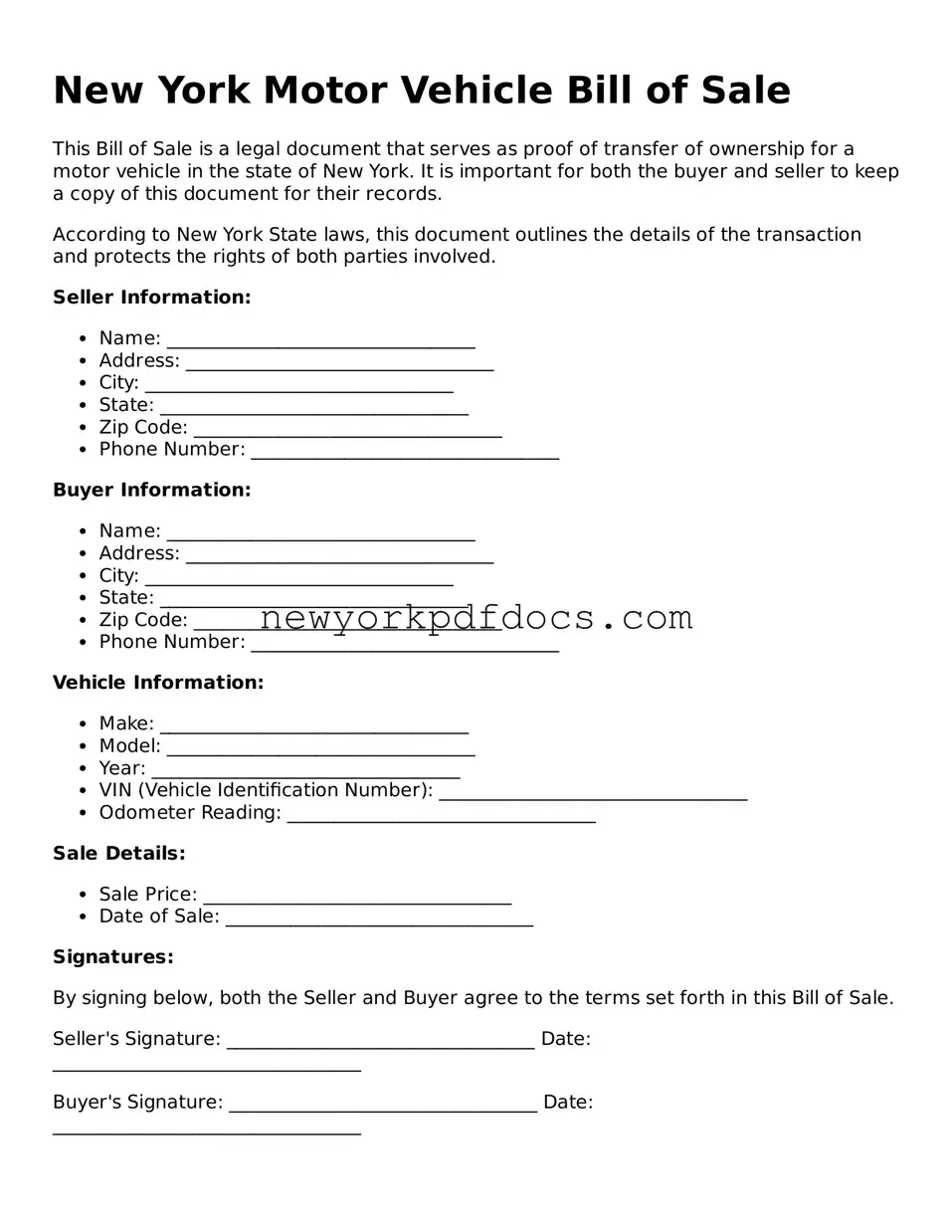New York Motor Vehicle Bill of Sale
This Bill of Sale is a legal document that serves as proof of transfer of ownership for a motor vehicle in the state of New York. It is important for both the buyer and seller to keep a copy of this document for their records.
According to New York State laws, this document outlines the details of the transaction and protects the rights of both parties involved.
Seller Information:
- Name: _________________________________
- Address: _________________________________
- City: _________________________________
- State: _________________________________
- Zip Code: _________________________________
- Phone Number: _________________________________
Buyer Information:
- Name: _________________________________
- Address: _________________________________
- City: _________________________________
- State: _________________________________
- Zip Code: _________________________________
- Phone Number: _________________________________
Vehicle Information:
- Make: _________________________________
- Model: _________________________________
- Year: _________________________________
- VIN (Vehicle Identification Number): _________________________________
- Odometer Reading: _________________________________
Sale Details:
- Sale Price: _________________________________
- Date of Sale: _________________________________
Signatures:
By signing below, both the Seller and Buyer agree to the terms set forth in this Bill of Sale.
Seller's Signature: _________________________________ Date: _________________________________
Buyer's Signature: _________________________________ Date: _________________________________
Witness (optional): _________________________________ Date: _________________________________
This document is not to replace any necessary registration or title transfer procedures with the New York Department of Motor Vehicles (DMV).
Always consider seeking legal advice if you feel uncertain about any terms or conditions.
